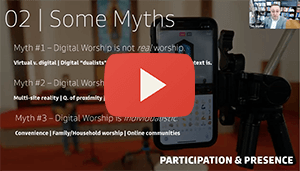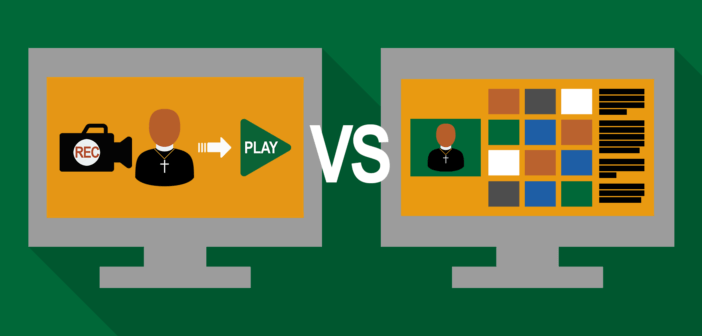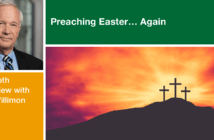Tim Snyder of the Lewis Center staff outlines the pluses and minuses of two platforms commonly used for digital worship — broadcast platforms and video conferencing. Each has its own logic, possibilities, and limitations that must be considered in deciding what is right in your setting.
Churches most commonly use one of two basic platforms for digital worship. Some use a broadcasting platform to deliver prerecorded video worship or to livestream a worship experience. Others offer worship through a video conferencing platform such as Zoom, Google Meetings, or Skype. Neither of these approaches is inherently better than the other. There are wonderful examples of congregations that use each very effectively, and also examples of each being used not so well. Each has its own logic, possibilities, and limitations that must be considered in deciding which is right in your setting.
Broadcasting
What are the advantages of a broadcasting approach to digital worship? It can build on a congregation’s existing infrastructure, such as the audio systems in their worship space or existing cameras. It provides a higher level of control over the quality of video and audio, and it is best for capturing musical offerings and choreographed actions. The result can be a media-rich worship experience that is highly engaging to many viewers. While it may seem a bit counterintuitive, high-production-value broadcasts can be more inviting to engage, even if that engagement may come later on, for example, when sharing a memorable moment with a friend or family member.
What are the limitations? To do broadcast worship well often requires a significant investment in technology and staffing. Also, the opportunities for active participation are rather limited. Some can participate in worship by submitting prerecorded elements, such as prayers, scripture readings, testimonies, or music. But for most worshipers, chat is the only real vehicle for interactive participation. It’s easy for people to slip into passive mode. But congregations that invite very specific forms of participation will get it. Add litanies, calls and responses, and creative uses of the chat box. Examine each part of your worship and ask what you can do to enhance active engagement.
Video conferencing
In contrast, worshiping on a video conferencing platform requires little to no infrastructure. And it is highly interactive, giving worshipers the opportunity not only to see and listen but also to be seen and heard. Another advantage is that it blurs the distinction between ritual and our daily lives. When everyone has their cameras on, the wonderful mosaic of tile images provides little windows into the stuff of people’s everyday lives — the very places where we try to live out our faith as disciples of Jesus Christ.
While many have grown weary of video conferencing as a ubiquitous feature of pandemic life, using it for worship is perhaps a way to bless this “everyday curse,” transforming a commonplace aspect of daily lives into a ritual moment or sacred space. Moreover, there are many examples of churches using video conferencing platforms in very creative ways, by taking their worship to street corners, local business, and so on. And video conferencing is best for facilitating structured conversations. On the flip side, it can be quite difficult to make Zoom feel like worship. And many, many congregations struggle with how to do music well on Zoom. For many, prerecorded music is the best option.
What’s best for your congregation?
It may be that neither of these approaches is perfect for your congregation. That’s why digital worship requires translation. And many congregations are finding ways to combine the two platforms. There are ways to broadcast out your Zoom meeting, but it doesn’t get you that much further along. And there are some platforms that will let you do several things simultaneously. But one of the simplest and easiest ways to combine these two platforms is to have a broadcast worship service followed by Zoom fellowship. This can be the best of both worlds.
 This article is derived from Participation and Presence: Leading Meaningful Digital Worship, a free online webinar offered by Dr. Tim Snyder through the Lewis Center for Church Leadership on March 23, 2021. Watch now.
This article is derived from Participation and Presence: Leading Meaningful Digital Worship, a free online webinar offered by Dr. Tim Snyder through the Lewis Center for Church Leadership on March 23, 2021. Watch now.
Related Resources
- 7 Reasons You Must Not Abandon Your Online Services by Thom S. Rainer
- 3 Strategies for Doing Church Online by Heidi A. Campbell






